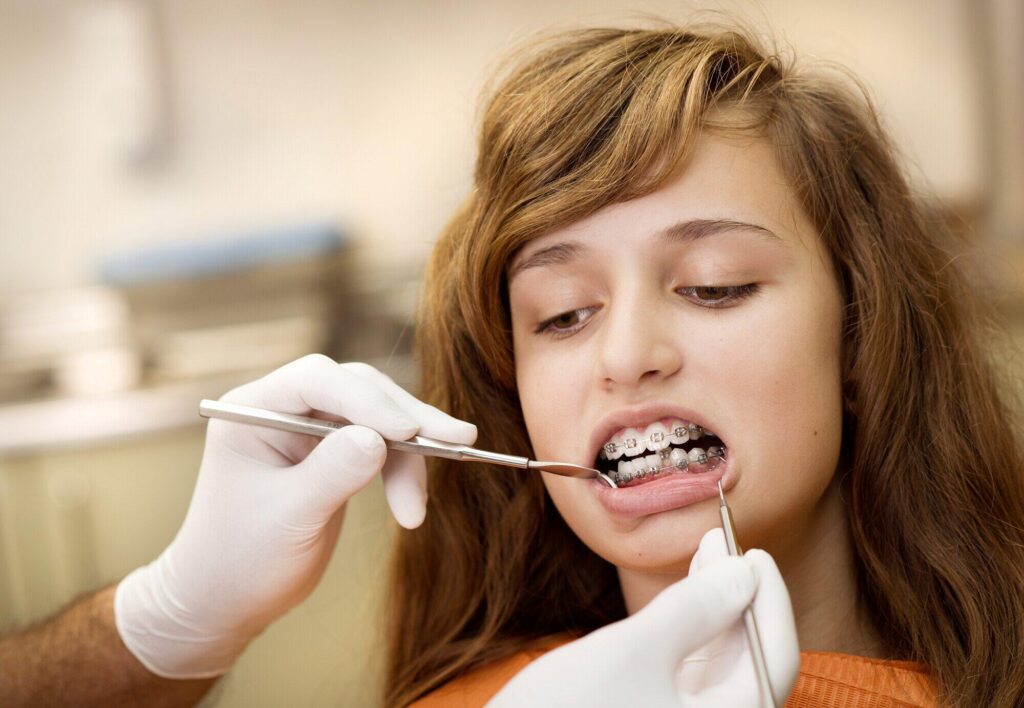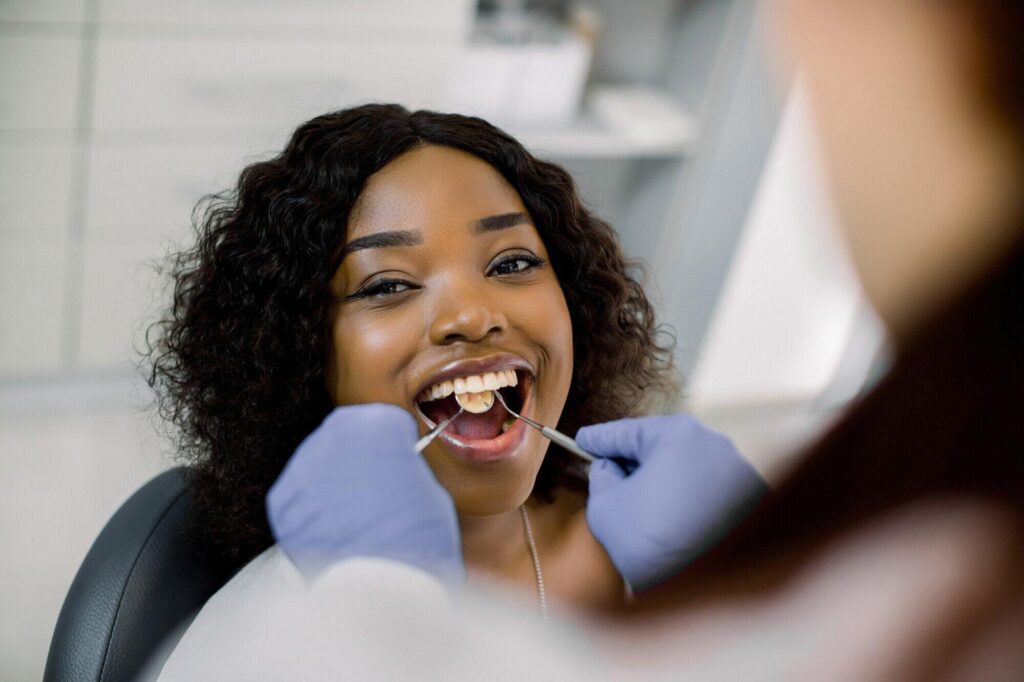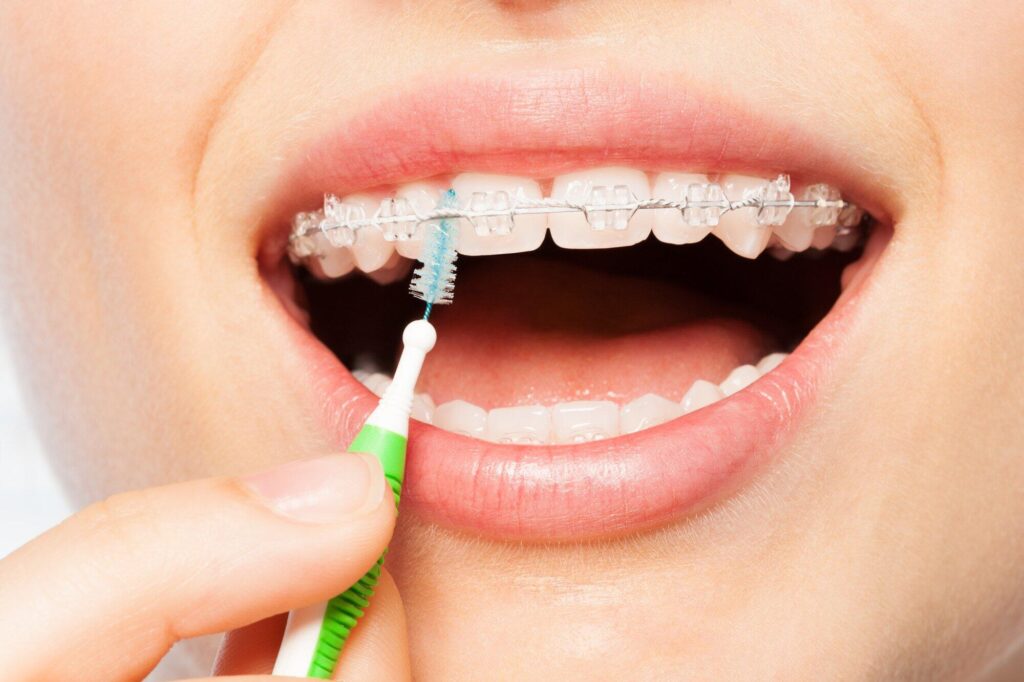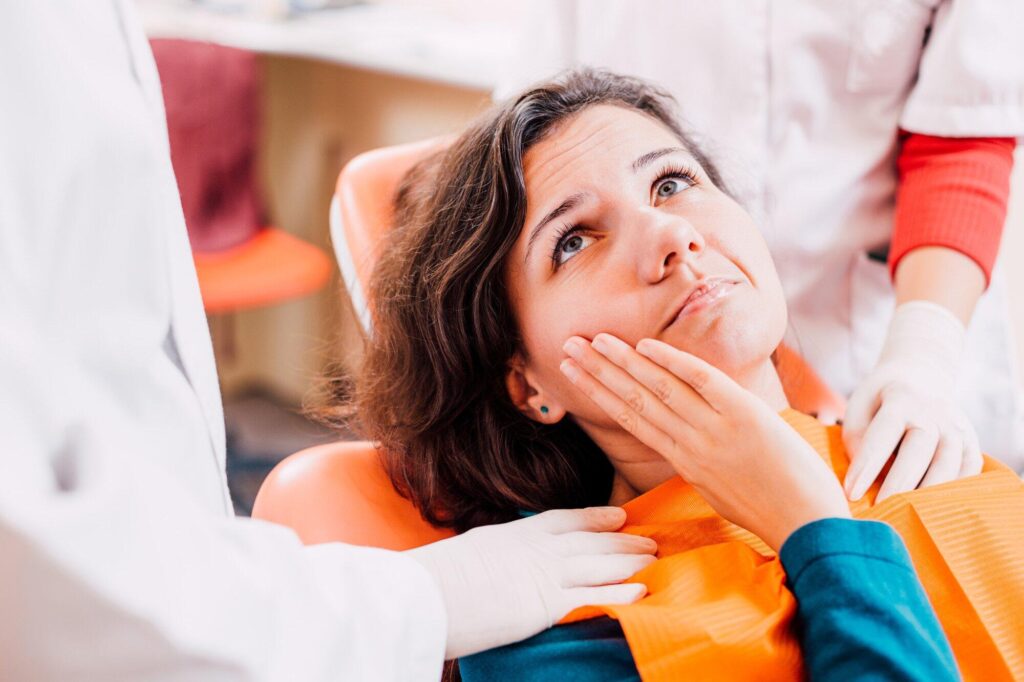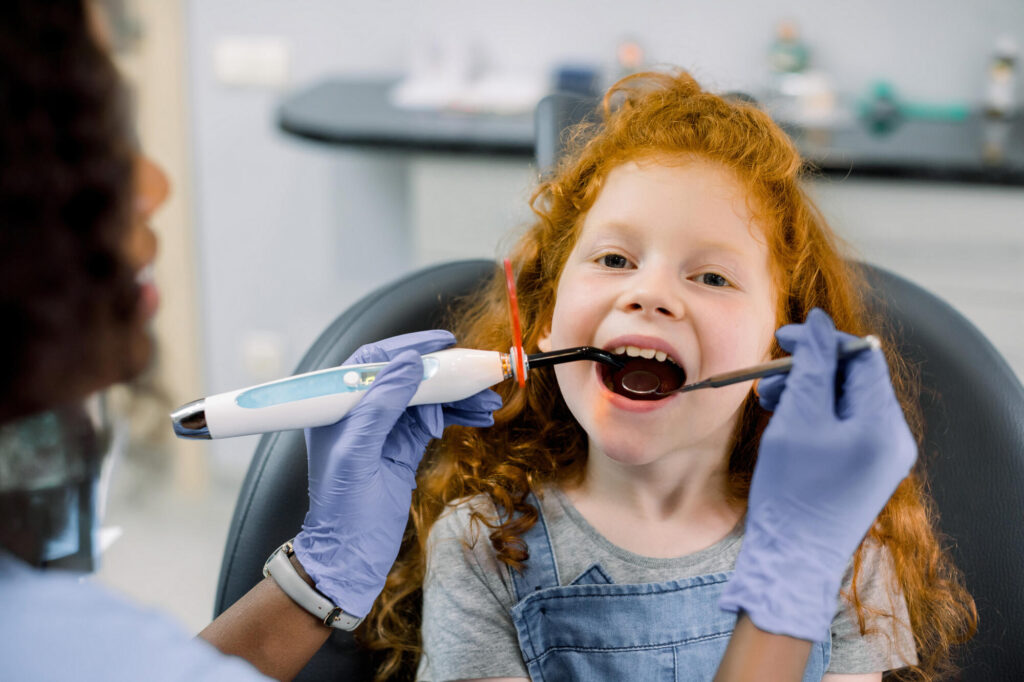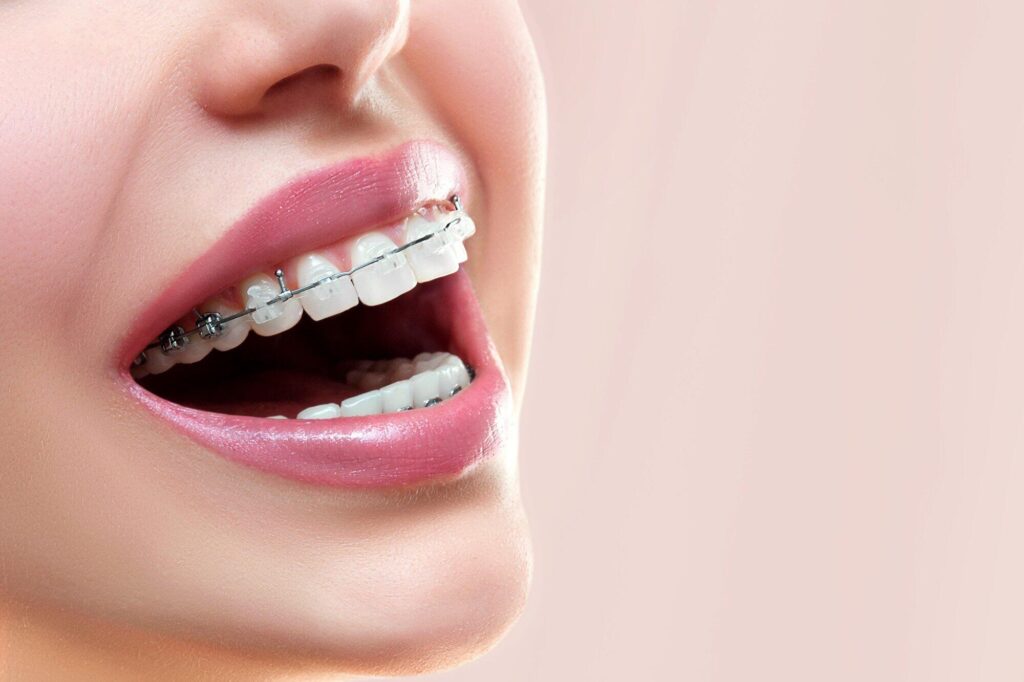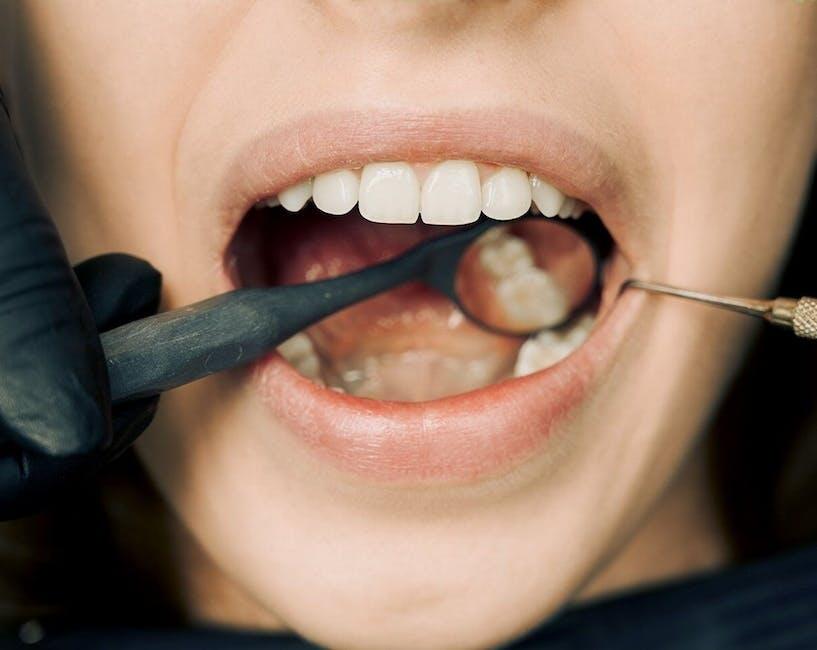April 24, 2024
Have you ever stood in front of a mirror, flashed a smile, and wished for straighter teeth? The road to achieving that perfect smile often begins with metal dental braces. This time-tested solution can both align teeth and enhance oral health. Yet, the thought of navigating this process can feel overwhelming.
From the initial application to the day they’re removed, metal braces transform not just your smile, but also your entire experience of dental care. This article demystifies what getting and living with braces entails. We want to help you make informed decisions that can significantly ease your journey of straightening teeth.
By understanding the ins and outs, including what to expect and how to manage the common hiccups, you’ll see how braces can be less of an ordeal and more of an exciting step towards the smile you’ve always wanted. This process is also similar to getting ceramic braces.
Keep reading to discover how to make your braces experience as smooth as possible. And if you’re preparing for an appointment with Dr. Matt or Dr. Mary, rest assured that you’re in great hands with a board-certified orthodontist!
The Process of Getting Metal Dental Braces
The path to a perfect smile often starts with a thorough evaluation by one of our orthodontists. This initial step is more than just a quick glance at your teeth. The orthodontist conducts a comprehensive examination, which may include digital X-rays or 3D imaging.
These images provide a deep dive into the structure of your jaws, the position of your teeth, and any underlying issues that aren’t visible to the naked eye. The goal is to develop a clear understanding of your oral health and the specific changes needed to achieve your smile goals.
Developing Your Personalized Treatment Plan
After this assessment, our orthodontists discuss the findings with you. This conversation covers:
- The recommended orthodontic treatment plan
- The expected duration of wearing braces
- Any preparatory work needed before the braces can be applied
This might include dental work to address cavities, removal of baby teeth, or the use of spacers to create enough room for teeth to move.
The Application Process
Once your mouth is ready for braces, and you’ve decided to proceed, your next orthodontist appointment is all about applying the braces. The process kicks off with a thorough cleaning of your teeth to ensure a clean surface for the braces to adhere to.
Next, our orthodontist applies a conditioning liquid to your teeth to prepare them for the brackets. This liquid roughens the surface slightly, allowing for a stronger bond between your teeth and the brackets.
The brackets, which are the small metal or ceramic pieces that attach directly to each tooth, are then placed using a precise dab of dental-grade adhesive. The placement of these brackets is carefully calculated to ensure each tooth moves in the correct direction and at the right pace.
Once all the brackets are securely in place, our orthodontist threads the archwire through them. This wire is the main player in the straightening process. It applies constant, gentle pressure to guide your teeth into their new positions.
To finish, small elastic bands, known as ligatures, are wrapped around the brackets to hold the wire in place. These bands come in various colors, allowing for a bit of personalization in your orthodontic treatment.
The entire application process is meticulous, but generally comfortable, taking anywhere from one to two hours to complete.
Life with Braces
Living with braces requires some adjustments, especially in the first few weeks. One of the biggest changes is diet. Hard, sticky, and chewy foods can damage braces, so you’ll need to avoid them.
Think soft foods and cut bigger pieces into smaller, manageable bites.
Oral hygiene is also crucial. Braces can trap food and plaque, leading to cavities and gum problems if you’re not careful.
Brushing after every meal and flossing daily becomes even more important when you have braces. Our orthodontists may recommend using special brushes designed to clean around the metal brackets and wires.
Adjustments are a regular part of life with braces. About every four to six weeks, you’ll visit our orthodontist to have your braces tightened. This can cause some orthodontic mouth pain, but it’s usually mild and temporary.
Pain relievers and soft foods can help manage this discomfort.
Finally, crooked teeth start to move and align within a few months, but the total time you’ll wear braces varies. It could be anywhere from 18 months to 3 years, depending on your individual needs.
The Road to Removal
After months or even years of anticipation, the day you get your braces off is a big moment. Understanding what to expect can make this exciting transition smoother and less intimidating.
The process of removing braces is much quicker and less complicated than putting them on. First, an orthodontist will use a special tool to gently detach the brackets from your teeth. This tool carefully lifts each bracket, minimizing discomfort.
Despite the pressure you might feel during this process, it shouldn’t hurt.
Once all the brackets are removed, there’s usually some adhesive left on your teeth. Our orthodontist will remove this residue, often using a dental handpiece.
This step polishes your teeth, leaving them smooth and clean. While the sensation of the handpiece might feel strange, it’s not painful.
With your braces off, your teeth will feel incredibly smooth and, for some, slightly strange to the tongue. This is normal and quickly becomes the new normal as you adjust over the next few days.
The next critical step in your orthodontic treatment involves an orthodontic retainer. Retainers are essential for maintaining the new position of your teeth. Without them, your teeth could shift back to their original positions, undoing all your hard work.
Our orthodontists will help you select the right type of retainer. This may be a retainer worn nightly or even a permanent retainer.
An orthodontist will explain how and when to wear your retainer. They might take impressions of your newly aligned teeth to create a custom retainer that fits perfectly.
Embrace Your Smile Journey with Confidence
We’ve unpacked the essentials of navigating life with metal dental braces – from preparation through to the grand unveiling of your new smile. Embracing braces means more than just enduring a period of adjustment. It’s about leveraging this powerful orthodontic treatment to correct crooked teeth and secure a healthier, more confident smile.
At SouthShore Orthodontics, we’re dedicated to ensuring your experience is not just comfortable, but truly transformative. Using the latest technology and personalized care plans, we stand by our patients at every step of their orthodontic journey. Schedule a consultation with us today and take the first step towards a brighter, straighter, beautiful smile.

